Some photos of water are very sharp, while others look like they were taken straight out of a misty dream.
To achieve the soft, misty water look, you need to improve your long exposure photography. Let’s get started with these water photography tips.
Since water exists in a variety of places, you have a lot of exciting water photography subjects to choose from. A few subject ideas:
You can also combine these subjects with other genres. For example, you can include props or animals in your water photography.
You can also take self-portraits next to silky-looking water. The more photography subjects you experiment with, the more original your photos will look.
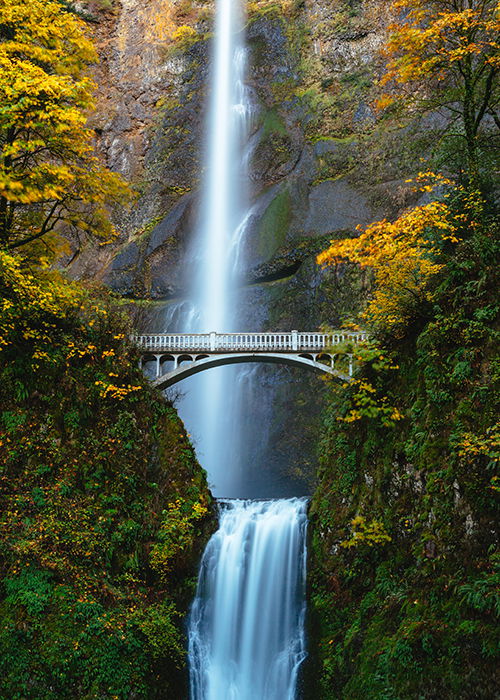
When you pick your favourite subject, you can start looking for appropriate locations.
Make sure the location is safe and has plenty of room. The more spacious it is, the more room you’ll have to shoot water photography from creative angles. Be aware of tourists, drones, and anything else that could get in the way.
Also, keep weather changes in mind. Most smooth water images are taken on peaceful days. If you’re taking pictures of a waterfall on a windy day, the water might end up damaging your equipment.
The lighting also has to be decent for you to take professional-looking water photography. Try photographing water during the golden hour or the blue hour.
You can use all of the water pictures in this article as a reference. You’ll notice that most of them have dramatic and vibrant skies. This feature is why they stand out from the photos in the water photography genre.

This doesn’t need to be a complicated process. Your goal is to find something that complements the water and tells an interesting story.
For example, you can add people or objects to your composition. This will create depth and give viewers more to observe when they look at your pictures.
In the photo above, the photographer chose to create symmetry using the wooden poles. The water isn’t the main subject of the image, but it complements the entire landscape.
The focal point is the group of wooden poles, which stand out more when surrounded by smooth water.
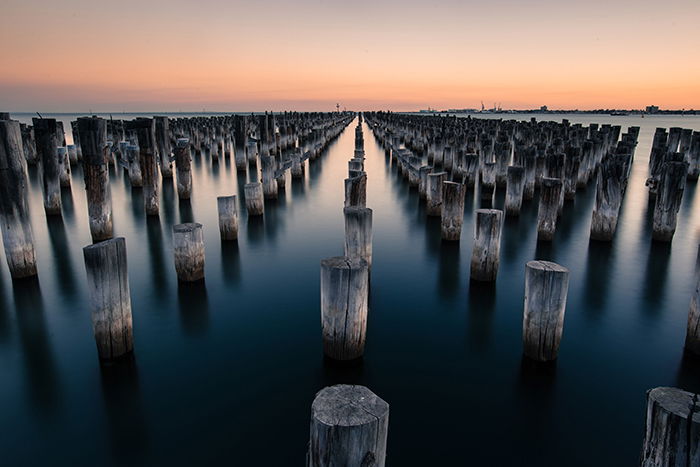
When you take soft photos, you need to keep two settings in mind:

A neutral density filter (or ND filter) is every landscape photographer‘s best friend.
This filter prevents underexposure and overexposure. Even if you’re taking photos on a bright day, your photos will look well-lit and neutral.
ND filters are essential in long exposure water photography. Because of all the movements and reflections, your photos might look overexposed.
The water might look too dull or vibrant compared to its surroundings. ND filters fix this instantly.
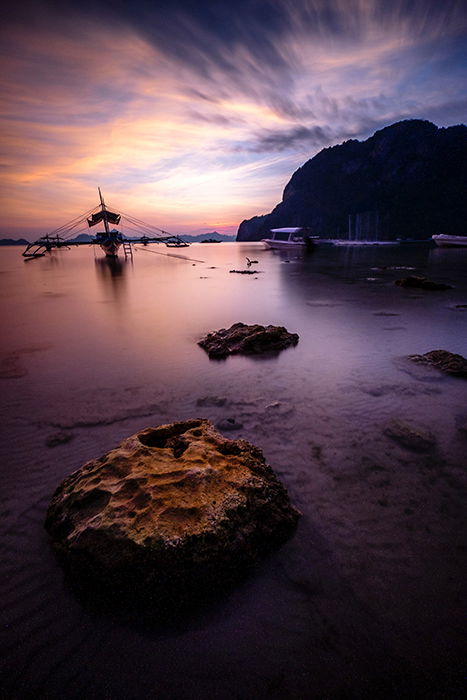
Water photography usually focuses on the movement of water and clouds only.
If your entire image is blurred, it will look abstract. There’s nothing wrong with this, but it’s not ideal if you like traditional landscape photography.
To keep your photos steady, use a tripod and a remote. A remote will let you take pictures without touching your camera. This will prevent any unnecessary movements from happening.
If you don’t want to invest in a remote, you can use a timer instead.
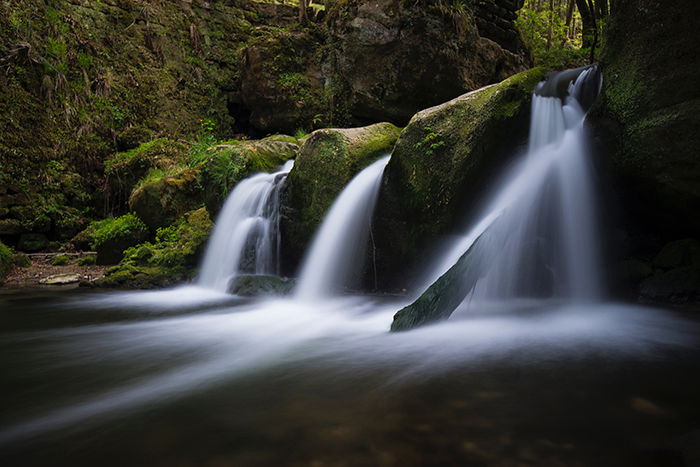
There are millions, if not billions, of silky water photos out there. If you want to make your photos look original, you need to think outside the box.
This means experimenting with different angles. Take unconventional photos of water. Break the rules. The more unusual ideas you work with, the more eye-catching your photos will be.
The image above is an excellent example of creative thinking. Most long exposure photographs are vast and atmospheric. Close-ups aren’t as frequent.
The photo above focuses on the movement of the water and the stillness of the rocks. The composition and colors all make it an original example of water photography.
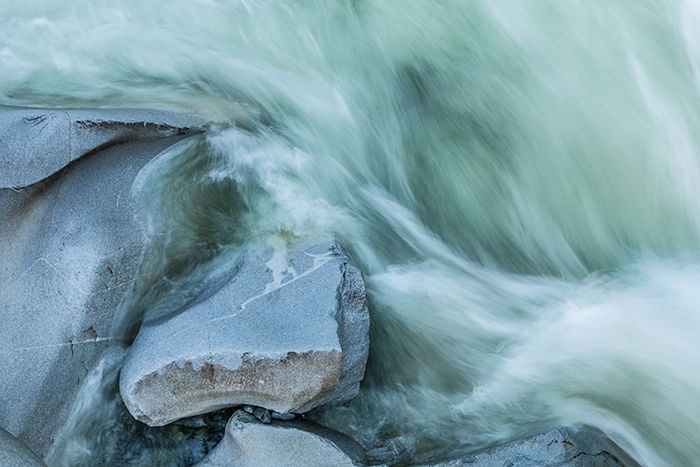
It’s challenging to capture proper reflections in long exposure photography. Your reflection will likely get lost in the movements. This will make it look abstract and blurred.
If you want to capture sharper reflections in water, you need to use faster shutter speed. You don’t have to use a tripod, but it could help you take sharper photos.
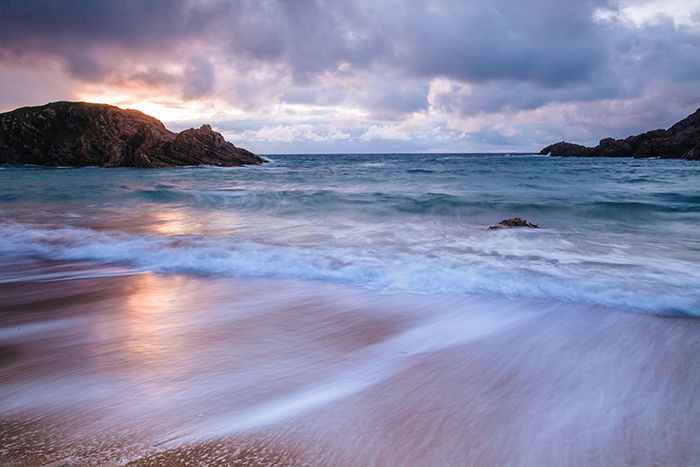
For a slightly misty effect, place your camera on a tripod and use slow shutter speed.
Try photographing water in different locations and shoot from different angles. All of this will bring you closer to shooting beautiful and misty images of water.
The silky water effect is a result of long exposure photography.
You can achieve this by using a slow shutter speed. The slower it is, the silkier the water will look.
You must use a tripod when shooting flowing water. This will help you take pictures that aren’t entirely blurred.
You should also use slow shutter speeds and an ND filter to make everything in your photograph look professional.
It depends on how silky you want the waterfall to look. The slower the shutter speed, the more abstract the water will look.
Some photographers set their shutter speeds to 4s, 15s, and even 30s. You can experiment with different speeds to find one that complements your style.
Water is an indispensable part of our lives, but it’s also a photogenic subject.
To make it look soft and dreamy, all you need is slow shutter speed, a tripod, and patience. Remember to try shooting from unusual angles to develop your unique photography style.
Why not check out our water droplet photography tips or water photography settings next!
